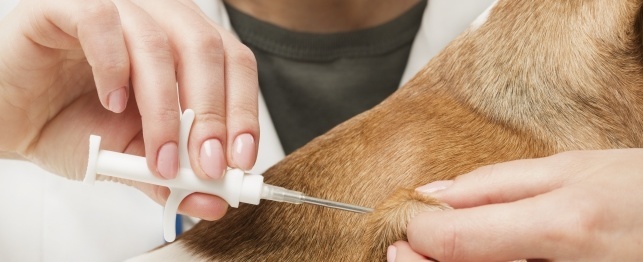
How to Raise a Therapy Dog. A therapy dog is not a service dog that assists the blind or disabled, but provides a different kind of help. They visit hospitals, nursing homes, mental health centers and shelters to aide in physical therapy and bring comfort to the ill and elderly. Consider the time required to take the dog on therapy visits. If you are still interested, raising a therapy dog could be one of the most rewarding experiences in your life. Read on to learn how to raise a therapy dog.
Contact local therapy or service dog groups to learn more about programs in your area. Ask members of the groups where and how they found their dogs. This is a good way to locate local breeders and get tips on raising a therapy dog. Research animal breeds on the Internet or at your local library.
Visit your local animal shelter, breeder or pet store and check the classifieds to find the right dog to train. The bond between animal and handler is necessary to raise a successful therapy dog.
Choose a dog with a calm, friendly temperament that also displays an active interest in the people and things around him. A slow, sleepy, inactive dog may have a mild temperament but would not be a suitable therapy dog because patients may feel rejected by his aloof, uninterested manner.
Consider an older dog or one of a mixed breed. Therapy dogs do not have to be raised from puppies and a mixed breed may have a more relaxed temperament than some "high strung" pure bred animals. If the dog is good with strangers, children and other animals, you are well on your way to raising a great therapy dog.
Socialize your dog. Take him to the dog park, walk him on a leash in your neighborhood and carefully introduce him to young children.
Teach your dog basic obedience commands. A therapy dog must learn to sit, stay, lie down and come on command. It also helps if the dog can learn to respond to these commands from a third party as well.
Familiarize your dog with the sights and sounds of busy city streets and crowded sidewalks. The dog should show an interest in what is going on around her without jumping, barking or otherwise disturbing others.
Get your dog immunized and keep good health records. Medical facilities may require a copy of your dog's health record before allowing him to become a therapy dog in the facility.
Maintain proper grooming of your therapy dog. Dogs can carry diseases that could affect the patients they are trying to help, so it is important that a therapy dog be bathed before each therapy visit.
 Homemade Tips for Keeping a Dog From Licking an Incision
Homemade Tips for Keeping a Dog From Licking a
Homemade Tips for Keeping a Dog From Licking an Incision
Homemade Tips for Keeping a Dog From Licking a
 Microchipping for Your Dogs Safety
Microchipping for Your Dogs Safety
Microchipping for Your Dogs Safety
Microchipping for Your Dogs Safety
 Adopting Puppies Before 8 Weeks - What You Should Know
Adopting Puppies Before 8 Weeks - What You Sh
Adopting Puppies Before 8 Weeks - What You Should Know
Adopting Puppies Before 8 Weeks - What You Sh
 Top 10 Dog Heart Murmur Symptoms
What i
Top 10 Dog Heart Murmur Symptoms
What i
 Dogs and Mental Health - What You Need to Know
Dogs and Mental Health - What You Need to Kno
Dogs and Mental Health - What You Need to Know
Dogs and Mental Health - What You Need to Kno
Copyright © 2005-2016 Pet Information All Rights Reserved
Contact us: www162date@outlook.com